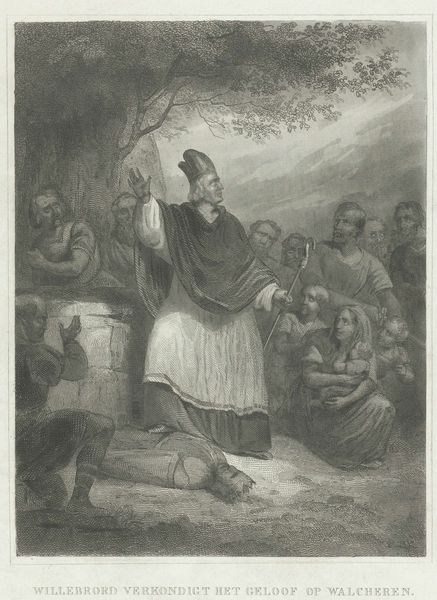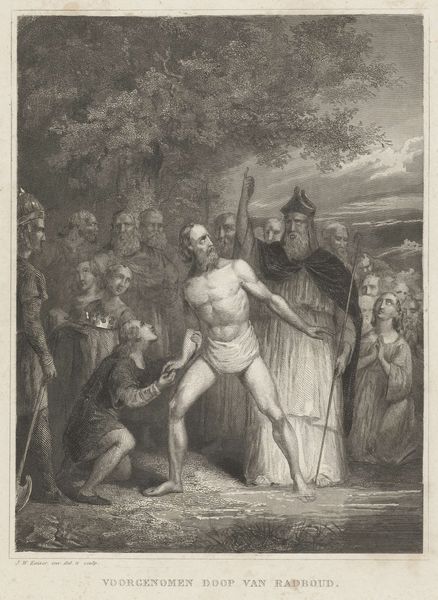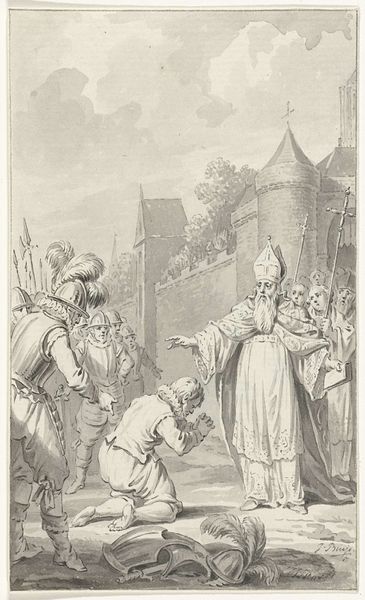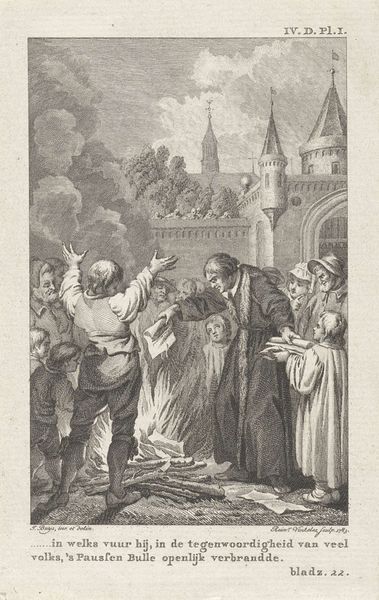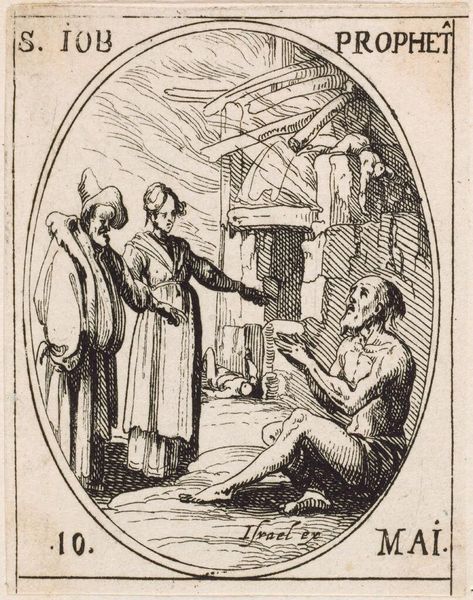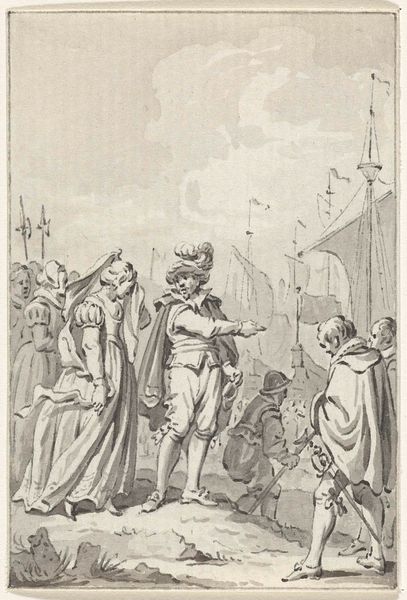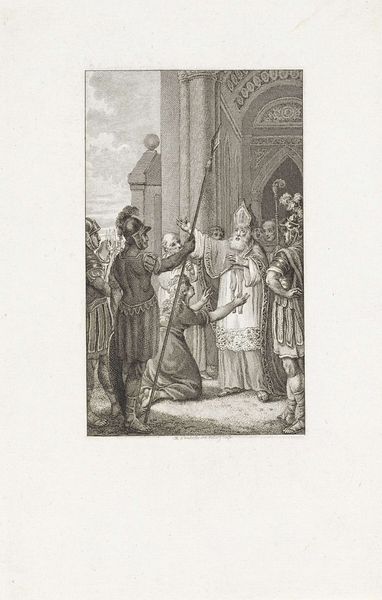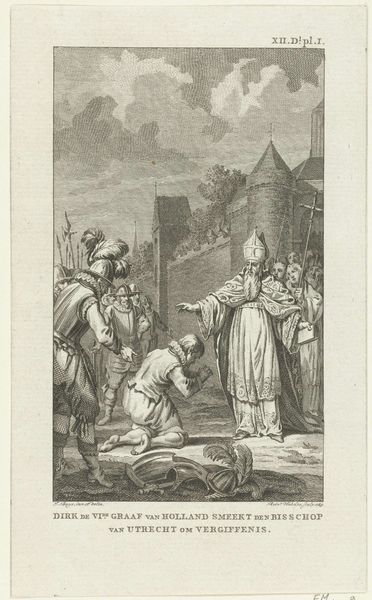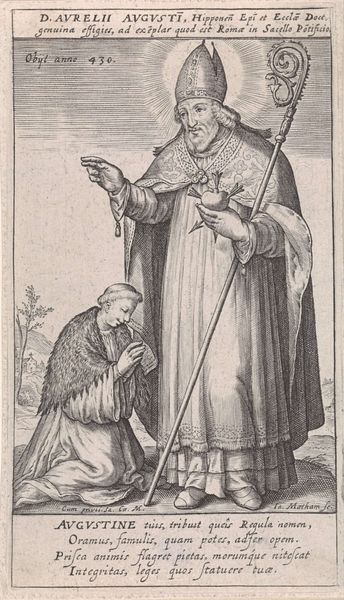
drawing, paper, ink
#
pencil drawn
#
drawing
#
narrative-art
#
pencil sketch
#
charcoal drawing
#
paper
#
charcoal art
#
ink
#
pencil drawing
#
portrait drawing
#
genre-painting
#
history-painting
#
academic-art
Dimensions: height 174 mm, width 133 mm
Copyright: Rijks Museum: Open Domain
Curator: This drawing, currently held in the Rijksmuseum, is entitled "Willibrord verkondigt het geloof op Walcheren, 695" by Johann Wilhelm Kaiser, dating from 1840. It’s rendered in ink, charcoal, and pencil on paper. My first impression is one of staged drama; a story is definitely being told here, though the tonal range is quite limited. Editor: Yes, the monochromatic palette really simplifies the forms, doesn't it? I'm immediately drawn to the contrasts – the rough textures created by the charcoal against the smoother, almost delicate lines of the figures in pencil. The paper itself must have been specifically chosen to hold up under such varied techniques. Curator: It’s interesting you focus on the paper itself! Kaiser lived at a time of emerging national identities, and this work clearly idealizes Willibrord, an Anglo-Saxon missionary, bringing Christianity to what is now the Netherlands. Look at how Kaiser has constructed the narrative, framing Willibrord as a civilizing force, with his crozier and raised hand—while someone is seemingly slain at his feet. Editor: Precisely! But even in that framing, consider the labor involved in producing such a detailed drawing. Each line, each shadow meticulously placed… and then think of the audience intended for this. Was it for reproduction as a print, thereby expanding the reach of the historical narrative, or was this primarily a work admired for its draftsmanship? The purpose significantly alters our reading. Curator: A fair point. We can analyze how art functions within larger power structures. Consider how 19th-century museums reinforced national narratives. Kaiser was, after all, the Director of the Rijksmuseum Print Room. His work shaped the public’s understanding of history. Editor: And Kaiser was, in effect, engaging in manufacturing consent. We must scrutinize what's left out just as intently as what is displayed—like the impact the Catholic missionaries had on suppressing earlier Pagan practices in the region. Curator: That perspective forces us to question those romanticized, nation-building accounts so often presented without critical analysis. Editor: Right, examining art means understanding it as a product of its time, a tangible manifestation of material and social relations. Curator: Indeed. Art acts as a historical witness. Editor: So let us look at art making to deepen our understanding of cultural legacies.
Comments
No comments
Be the first to comment and join the conversation on the ultimate creative platform.
